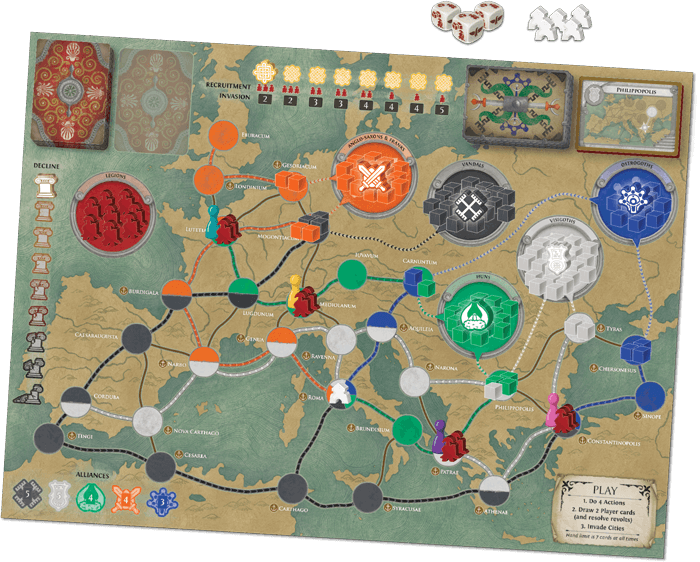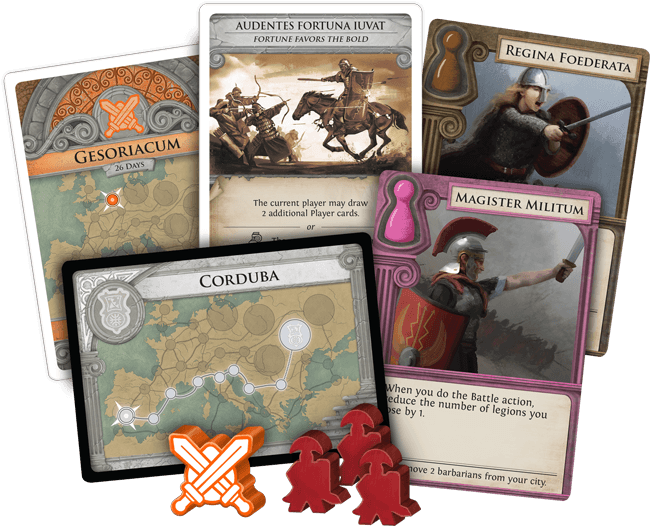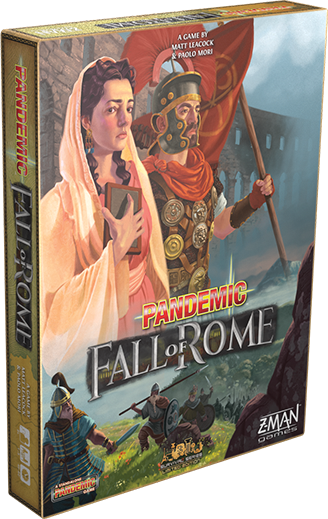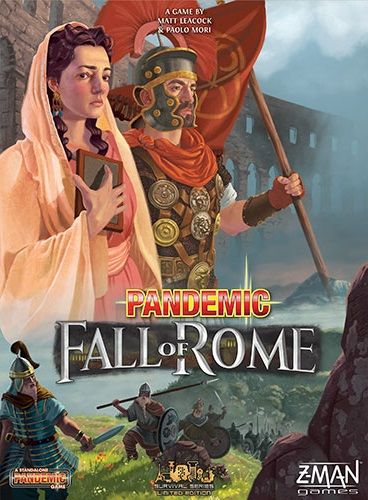Overview
Welcome to the intricate world of ‘Pandemic: Fall of Rome,’ a fascinating blend of historical strategy and cooperative gameplay. In this review, we’ll dive into the crux of what makes this title both challenging and rewarding. As we traverse the mechanics of cooperative crisis management, marvel at the integration of historical civilizations, and scrutinize the synergy achieved through strategic teamwork, we’ll discover just how compelling a board game can be when it weaves together the rich tapestry of history with the thrill of collaboration and problem-solving. Prepare to be enamored by the depths of strategy that ‘Pandemic: Fall of Rome’ brings to the table.
How It Plays
Setting Up
To begin your journey as a defender of Rome, first lay down the board which represents the Roman Empire besieged by barbarian tribes. Each player selects a character with unique abilities. Place your figures in Rome, distribute some initial resources, and set out the barbarians on their starting locations. Now, draw the first set of invasion cards to see where immediate threats appear. You’re set, generals!
Gameplay
During gameplay, players collaboratively perform four actions on their turn, choosing from moving their legions, fighting barbarians, recruiting legions, trading cards, or building fortifications. After fulfilling their duties, they draw new cards, adding either to their strategic resources or possibly unleashing more barbarians against the dwindling empire. Teamwork is paramount, as you jointly strive to keep the empire standing by balancing defensive maneuvers with offensive strategies against the unrelenting enemy.
Winning the Game
Victory in ‘Pandemic: Fall of Rome’ comes through adeptly managing the barbarian threat through forming alliances. Players must use the cards in their ability deck to collaborate and drive back the five tribes from whence they came or recruit them as allies. You win by either allying with or eradicating all the barbarian tribes before Rome falls or the player deck runs dry. It’s a historic tightrope walk – will Rome rise or fall? Your teamwork decides.
Want to know more? Read our extensive strategy guide for Pandemic: Fall of Rome.
Forging Alliances Amidst Adversity
In the lavishly complex world of cooperative board games, nothing beats the thrill of ‘us against the world.’ I remember a particular evening when my friends and I tackled Pandemic: Fall of Rome. The experience reminded me of the first principle of cooperative crisis management in board games: camaraderie.
The Bonds That Shield Rome
Transitioning through each phase of the game, we shifted from cautious strategists to valiant defenders of Rome. Staring defeat in the face, we learned valuable lessons about trust. In one instance, we were on the brink of succumbing to invading tribes, and it was the altruistic sacrifice of a friend, swapping roles from builder to fighter, that taught us how agile our cooperation needed to be.
Unified Strategy Drives Success
Key transitions in the game often saw us deliberating the ‘what ifs’ of our tactics. As escalating threats coerced us into rethinking our positions, it became evident that the game’s strength lay in how it molds the group’s collective intellect into a single, strategic blade wielded against fate’s whims. ‘Should we fortify here or risk moving?’ we continuously questioned, leading to intense discussions akin to Roman senators in turbulent times. Decision points became reflective moments, pressing upon the weight of common purpose and united action.
With the barbarian hordes still at bay by game’s end, the room buzzed with a sense of victory and shared accomplishment. Our little fellowship had blazed through adversity by embracing cooperative tactics, a testament to the heart of Pandemic: Fall of Rome Review’s premise.
Ascending from the storied tumult of our conquest, stand by as we delve into the realms of Historic civ integration next.

Bringing History to the Table
In the tapestry of board gaming, Pandemic: Fall of Rome stands out vividly by weaving the threads of history into its cooperative playbook. Bridging eras with ease, my gaming group frequently marvels at how seamlessly the historical elements are integrated into the mechanics, preventing the collapse of a civilization. Let me share a tidbit from one of our riveting sessions.
Past Meets Present
Initially skeptical, my friends were swiftly intrigued by how authentically the game’s constructs mirrored historical challenges. Each player, adopting roles from Roman society, experienced the empire’s struggle against invading hordes. The sense of solidarity elevated our gameplay from mere action points to partaking in Rome’s high-stakes endurance.
Education Through Entertainment
If you’re looking to quench your thirst for history subtly and playfully, this board game is akin to discovering a hidden scroll in a dusty amphora. The result? A fascinating dive into eras gone by, without fear of parchments turning to dust. In our last play, not only did my party fend off the Visigoths, but we also debated the merits of Roman military strategy.
The next section will fortify this dialogue further, plunging into the realm of ‘Strategic Teamwork Synergy.’

The Art of Synchronized Strategy
When unraveling the delicacies of board game tactics, much like in Pandemic: Fall of Rome, the synthesis of strategic teamwork can truly elevate the gameplay experience. It’s not merely about having a strong plan; it’s about weaving together a tapestry of moves that perfectly align with your comrades-in-arms.
Making Wise Moves Together
Recalling my own campaigns besieged by the hordes threatening Rome, each turn became a pivot point of collective decision-making. Balancing resource allocation with maneuvering our legions, the synergy was palpable as each player’s strategic contributions danced alongside one another harmonically. This liaison of players’ performances didn’t just represent standalone strategic thinking; it embodied a sophisticated symphony of intellects melding.
Harnessing Collective Intellect
Furthermore, as legionaries and diplomats within Pandemic: Fall of Rome, the clever distribution of roles underlies this symphony’s success. As my gaming group hunkered down, the alchemy of combining diverse strategic approaches shone through. The plights and eventual triumphs we shared were testaments to the game’s knack for buttressing teamwork scaffolded on shrewd strategy.
In conclusion, strategic teamwork is not only essential but soul-stirring in the realm of coop board games. My recommendation? For those who revel in the majestic orchestration of minds striving for a common goal, Pandemic: Fall of Rome is a testament to the grandeur of collaborative strategic play.

Conclusion
Concluding our deep dive into Pandemic: Fall of Rome, it’s evident that this game isn’t just another board in the mosaic of the Pandemic series, but an innovative experience forging its path. The harmonious blending of rich historical themes with the strategic necessity for cooperative teamwork offers a compelling play strategy that stands out from its peers. The game strikes a fine balance between complexity and accessibility, making it suitable for both seasoned gamers and newcomers—an impressive feat of game design. Whether you’re bargaining with friends on the next move or tasting the tense thrill of turning a potentially game-damning card, Pandemic: Fall of Rome consistently delivers dynamic social interactions and challenging gameplay. Through the clashing of swords and the bureaucracy of Roman politics, this board game manifests a unique and pervasive charm. Closing this review, the legion’s banner stands high; I not only recommend this game for those with a penchant for history and strategy but for any gathering that enjoys a touch of cooperative tension on game night.


